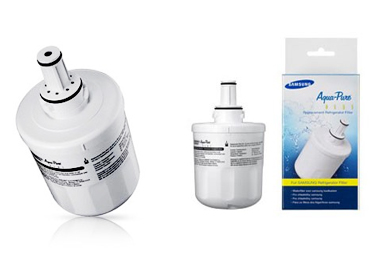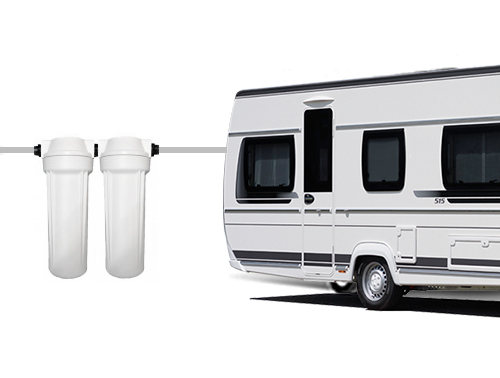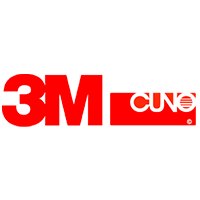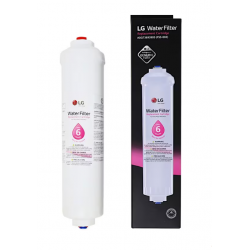Phone: 1300 767072 - 0406739544 - 02 96957740 | Email: sales@aquapureplus.com.au | Address: 17-18/61-71 BEAUCHAMP ROAD MATRAVILLE 2036 NSW AUSTRALIA
Welcome Sign in
No products
unpleasant odors
* Activated Carbon Filters: Activated carbon filters, commonly used in water filtration systems, can effectively remove many organic compounds that cause odors. These filters work by adsorbing contaminants onto the carbon surface, reducing or eliminating the odor.
*aluminum
Filtration: Filtration methods such as activated ca...
unpleasant odors
* Activated Carbon Filters: Activated carbon filters, commonly used in water filtration systems, can effectively remove many organic compounds that cause odors. These filters work by adsorbing contaminants onto the carbon surface, reducing or eliminating the odor.
*aluminum
Filtration: Filtration methods such as activated carbon filters or multimedia filters can effectively remove aluminum from water. The filters physically trap the aluminum particles as the water passes through them.
* Barium
Activated Alumina: Activated alumina is a specialized adsorbent that can effectively remove barium from water. It works by adsorbing barium ions onto its surface. The water is passed through a bed of activated alumina, and the barium ions adhere to the alumina particles, resulting in their removal from the water.
* Cadmium
Activated Carbon Adsorption: Activated carbon filters can effectively adsorb cadmium from water. The porous structure of activated carbon provides a large surface area for cadmium ions to adsorb onto. The water is passed through a bed of activated carbon, and the cadmium ions are trapped within the carbon filter.
* Pharmaceuticals
Granular Activated Carbon (GAC) Filtration: GAC filters have proven effective in removing certain pharmaceutical compounds through adsorption. The porous structure of activated carbon can trap and remove pharmaceutical molecules from water as it passes through the filter.
Membrane Filtration: Techniques like reverse osmosis (RO), nanofiltration (NF), or ultrafiltration (UF) can be used to remove pharmaceuticals from water. These processes involve passing water through a semi-permeable membrane, which can effectively reject and remove pharmaceutical compounds.
* Chemicals
Activated Carbon Filtration: Activated carbon filters are effective in removing a wide range of organic chemicals, such as pesticides, solvents, and some volatile organic compounds (VOCs). The porous structure of activated carbon adsorbs the chemicals as water passes through the filter.
* Chloramines
Activated Carbon Filtration: Activated carbon filters can effectively remove chloramines from water. The porous structure of activated carbon adsorbs and traps the chloramines as water passes through the filter.
*Chlorine
Activated Carbon Filtration: Activated carbon filters, commonly available as granular activated carbon (GAC) or carbon block filters, are effective in removing chlorine from water. The porous structure of activated carbon adsorbs and traps chlorine molecules as water passes through the filter.
* Chromium
Ion Exchange: Ion exchange resins can effectively remove trivalent chromium (Cr(III)) from water. These resins exchange chromium ions with other ions in the resin, such as sodium or hydrogen, resulting in the removal of chromium from the water.
Reverse Osmosis: Reverse osmosis (RO) is a membrane filtration process that can remove both hexavalent chromium (Cr(VI)) and trivalent chromium (Cr(III)) from water. The semipermeable membrane used in RO blocks the passage of chromium ions, allowing only
* Contaminants
Filtration: Filtration methods involve passing water through a physical barrier to trap and remove contaminants. There are various types of filters available, such as activated carbon filters, sediment filters, multimedia filters, and membrane filters like reverse osmosis, which can effectively remove different types of contaminants.
*Coper
-Ion Exchange: Ion exchange resins can effectively remove copper ions from water. These resins exchange copper ions with other ions in the resin, such as sodium or hydrogen, effectively reducing the copper concentration in the water.
-Activated Carbon Filtration: Activated carbon filters can adsorb copper ions from water, reducing their concentration. The porous structure of activated carbon provides a large surface area for copper ions to adhere to as water passes through the filter.
-Reverse Osmosis: Reverse osmosis (RO) is a membrane filtration process that can effectively remove copper and other contaminants from water. The semipermeable membrane used in RO blocks the passage of copper ions, allowing only pure water to pass through.
* Corrosion
-Corrosion Inhibitors: Adding corrosion inhibitors to the water can help reduce the rate of corrosion. These inhibitors form a protective layer on metal surfaces, preventing or minimizing metal degradation.
-Filtration and Sedimentation: Installing filters and sedimentation tanks can remove suspended particles and debris from the water. These particles can contribute to corrosion
* Cryptosporidium
Filtration: Cryptosporidium can be effectively removed from water using filters with a pore size of 1 micron or smaller. Microfiltration, ultrafiltration, and nanofiltration membranes are commonly used for Cryptosporidium removal. These membranes physically trap the parasites as water passes through them.
- UV Disinfection: Ultraviolet (UV) light with a specific wavelength can effectively inactivate Cryptosporidium. UV disinfection systems can be used to treat water and destroy the parasites by exposing them to UV light.
*Giardia
-Filtration: Giardia can be effectively removed from water using filters with a pore size of 1 micron or smaller. Microfiltration, ultrafiltration, and nanofiltration membranes are commonly used for Giardia removal. These membranes physically trap the parasites as water passes through them.
- UV Disinfection: Ultraviolet (UV) light with a specific wavelength can effectively inactivate Giardia. UV disinfection systems can be used to treat water and destroy the parasites by exposing them to UV light.
*Cyst
-Cysts and Coliform Bacteria: a. Filtration: Use a water filter with a pore size of 1 micron or smaller, specifically designed for cyst removal. This can effectively remove cysts and coliform bacteria from the water. b. Disinfection: Treat the water with a disinfectant such as chlorine, chloramine, or UV light to inactivate and kill the remaining cysts and coliform bacteria.
-Heavy Metals: a. Coagulation and Flocculation: Use coagulants such as alum or polyaluminum chloride to promote the aggregation of heavy metal particles, forming larger flocs that can be removed through sedimentation or filtration.
-Ion Exchange: Consider using ion exchange resins that are specific for heavy metals to remove them from the water. The resins exchange the heavy metal ions with other ions in the resin, effectively reducing their concentration.
-Reverse Osmosis: Reverse osmosis (RO) is effective in removing heavy metals from water. The semipermeable membrane used in RO blocks the passage of heavy metal ions, allowing only pure water to pass through.
-Activated Carbon Filtration: Activated carbon filters can adsorb certain heavy metals from water. The porous structure of activated carbon provides a large surface area for adsorption.
* Herbicides
Activated Carbon Filtration: Activated carbon filters can effectively adsorb many organic compounds, including certain herbicides, from water. The porous structure of activated carbon provides a large surface area for adsorption, trapping the herbicide molecules as water passes through the filter.
Advanced Filtration Techniques: Advanced filtration techniques such as nanofiltration (NF) or reverse osmosis (RO) can effectively remove herbicides from water by selectively
*Iron
Ion Exchange: Ion exchange resins specifically designed for iron removal can be used. These resins exchange the iron ions with other ions in the resin, effectively reducing the iron concentration in the water. Over time, the resin becomes saturated with iron ions and needs regeneration or replacement.
* Manganese
-Ion Exchange: Specific ion exchange resins designed for manganese and mercury removal can be used. These resins exchange manganese or mercury ions with other ions in the resin, effectively reducing their concentrations in the water. Regular regeneration or replacement of the resin may be required as it becomes saturated.
- Reverse Osmosis: Reverse osmosis (RO) is an effective method for removing manganese and mercury from water. RO uses a semipermeable membrane that blocks the passage of manganese and mercury ions, allowing only pure water to pass through.
* Particles & Sediment &Sands
-Sedimentation: Allowing water to sit undisturbed in a container allows larger particles to settle to the bottom due to gravity. Once settled, the clearer water can be carefully poured or siphoned off, leaving behind the sediment.
- Filtration: Filtration methods involve passing water through a physical barrier to trap and remove particles. There are various types of filters available, such as sand filters, multimedia filters, activated carbon filters, or membrane filters, which can effectively remove particles of different sizes.
-
* pesticides
- Filtration and Reverse Osmosis: Filtration techniques, including nanofiltration (NF) or reverse osmosis (RO), can effectively remove pesticides from water by selectively blocking their passage through semipermeable membranes.
- Activated Carbon Filtration: Activated carbon filters can effectively adsorb many organic compounds, including certain pesticides, from water. The porous structure of activated carbon provides a large surface area for adsorption, trapping the pesticide molecules as water passes through the filter.
- Water Softeners: Scale is commonly caused by hard water, which contains high levels of minerals. Installing a water softener can help reduce the hardness of water by replacing calcium and magnesium ions with sodium or potassium ions. This prevents the formation of scale in the first place.
- Anti-Scale Devices: Various anti-scale devices are available in the market, such as magnetic or electronic water conditioners. These devices claim to alter the crystal structure of minerals, inhibiting scale formation. However, the effectiveness of such devices can vary, and it's advisable to research and select reputable products.
Filtration: Filtration methods involve passing water through a physical barrier to trap and remove sediment particles. There are various types of filters available, such as sediment filters, multimedia filters, sand filters, or cartridge filters, which can effectively remove sediment of different sizes.
INLINE FILTERS There are 20 products.
-
DA29-10105J, WSF100, EF9603 Samsung...
WSF-100, DA29-10105E, DA2910105E, DA2910105C, DA29-10105C, DA99002588, DA99-002588, EF9603 and HAEFE/EXP, HAFEX/EXP Samsung Fridge filters model number DA29-10105J ,DA2010CB DA2010CB-WF
In Stock -
Daewoo Replacement Fridge Filter DD-7098...
Daewoo (DD-7098),LG BL9808, 5231JA2012A, SAMSUNG DA29-10105J) Universal Fridge water filter cartridge THIS FILTER IS MANUFACTURED BY MICROFILTER, KOREA- THE VERY SAME COMPANY THAT MADE GENUINE SAMSUNG DA2910105J FILTER AND LG WATER FILTERS
In Stock -
Aqua Blue H20 Stefani Compatible Inline...
Stefani Compatible Inline Fridge Filter IC-100Q-FRG
In Stock -
AP717-WF Generic Filter replaces AP717
AP717-WF Generic Filter replaces AP717 Part Number: AP717-WF / Suits for: AP717, AP-717, CFS717, CFS-717 Reduce sediment, chlorine taste and odor and scale from your drinking water and ice
In Stock -
DA29-10105J Samsung Water Filter Genuine...
Samsung Genuine Fridge filter Model: HAFEX/EXP, HAF-EX/XAA part number DA29-10105J /DA29-10105H External Push In Fitting Ice Maker and Water Filter.
In Stock -
5231JA2012A LG Fridge Filter - Push in...
LG INLINE SCREW TYPE EXTERNAL FILTER PART NUMBER: 5231JA2012A GR-D257SL-661L
In Stock




















